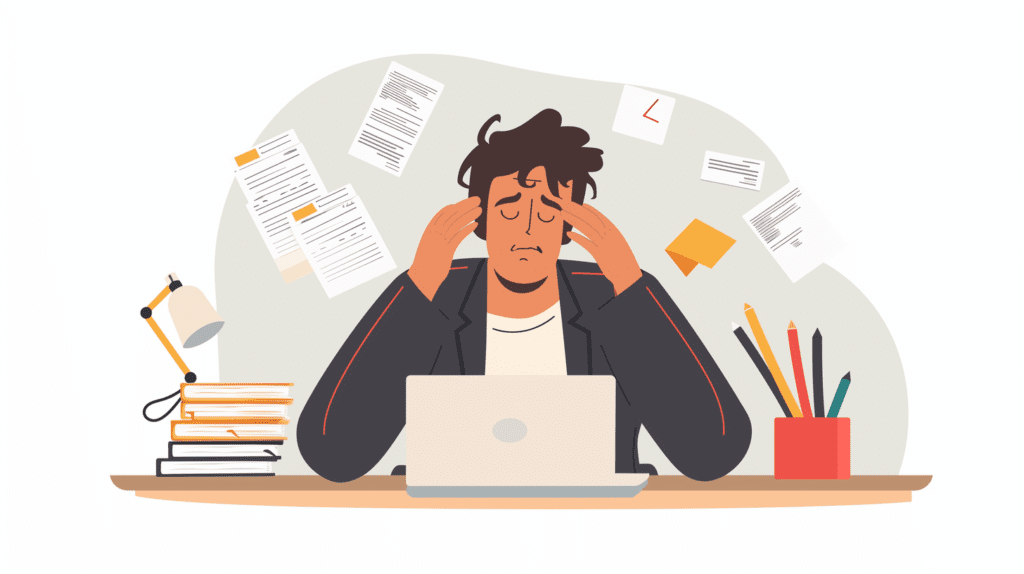The workplace is abuzz with the concept of employee burnout. Data shows that Google searches for “burnout” more than doubled in 2021. Since then, both searches for and cases of burnout have continued to rise.
Burnout is a killer of employee retention, morale, engagement, and productivity. In a perfect world, employers would have the power to eliminate employee burnout while maintaining their employee policies and keeping their bottom line strong. But is employee burnout preventable? And once burnout happens, can it be turned around?
What Employers Can Do to Prevent and Fix Employee Burnout:
According to The Harvard Business Review, employee burnout is preventable—even fixable, but it’s up to the employer to take action. The HBR specifies that, with “organizational hygiene, better data,” and “wellness offerings,” organizations do, in fact, “have a chance” to turn around employee burnout within their companies.
At Peoplelytics, we’re here to help you do just that. We agree that better data is critical to healing a burnout culture—or, even better—staving it off in the first place in favor of a culture of mental wellness and work-life balance.
In this post, we’ll discuss the power of employers to fix and avoid a culture of employee burnout holistically. We’ll cover how you can gather the data you need to get started, and what you can do once you have insights in hand to create lasting, impactful change.

What is Burnout?
An understanding of burnout and work-related stress is key to healing the problem within your organization from the inside out, rather than just “slapping a band-aid on it.”
In the context of the workplace, “burnout” is a classified occupational phenomenon, not just a buzzword or frenzy. It is defined in the 11th Revision of the International Classification of Diseases (ICD-11) as a “syndrome” that can result from long-term, mismanaged stress at work.
Are Managers Responsible for Employee Burnout?
While managers may not be responsible for an employee’s burnout in every case, Gallup research shows that “root causes of burnout are within managers’ span of control.” In other words, while managers may cause burnout, they certainly have the power to fix or prevent it.
According to Gallup, “listening may seem like an obvious solution”, but “too few managers make frequent employee check-ins and ongoing conversations a high priority,” whether with person-to-person conversations or via the administration of a confidential employee burnout and work-related survey.
To fix and prevent burnout, employees have to be able to trust that their organization and their manager(s) care about their well-being. They need to understand that their concerns will be heard and taken seriously. Showing employees that their mental health and work-life balance starts by finding out where problems lie and paying those problems proper attention.
How Does Employee Burnout Show Up in Our Workplace?
Burnout can be very dangerous to the health of an employee and the health of an organization.
According to the Mayo Clinic, burnout can manifest in employees in ways that are both emotional and physical. Burnout should not be confused with clinically diagnosable medical conditions such as depression, although burnout has been shown to raise rates of depression. While each employee population is different, symptoms like failure to find value in one’s work, social withdrawal, loss of focus, and self-doubt are common across demographics.
Burnout manifests in organizations in many ways, but the particulars are specific to each workplace. To understand how to detect and fix burnout within your organization, you need the “better data” described by HBR—which, by necessity, will be individual to your company and its employee population.
The first step in uncovering how burnout is showing up in your workplace is to administer a comprehensive and confidential employee burnout and work-related stress survey. In crafting your employee burnout and work-related stress survey, it may help to keep these indicators of burnout from Mayo Clinic in mind:
- Value: An employee placing low value on their work
- Enthusiasm: An employee’s feeling that they must “drag themselves to work”
- Avoidance: Procrastination and/or trouble beginning tasks
- Connectedness: An employee’s feeling of distance between themselves and their work; an employee’s feeling of distance between themselves and their colleagues and managers
- Patience: Loss of patience with colleagues and clients
- Energy: Loss of energy, particularly involving work tasks
- Focus: Loss of ability to focus on work tasks
- Satisfaction: Low levels of satisfaction in one’s work
- Mood: An employee’s feelings of being “let down” with respect to their job or work
- Confidence: An employee’s feelings of self-doubt regarding their talents and abilities at work
- Coping Skills: An employee’s use of unhealthy coping mechanisms, such as binge eating or alcohol and/or substance abuse, whether on the job or after work hours
- Rest: Loss of ability to fall asleep or sleep through the night
- Physical Symptoms: The presence of physical manifestations of burnout, such as headaches or stomach issues
Crafting Your Survey:
Determining whether burnout exists at an individual level is the first step to unlocking patterns of employee burnout within your organization. As you’re crafting your employee burnout and work-related stress survey, consider the inclusion of some of the following questions:
Demographic questions, such as:
- Age
- Gender
- Family or household status (i.e, whether an employee is married or lives with a partner, cares for children, or is a caregiver for adults)
- Length of tenure with the company
- Specific role or position at the company
- Department
- Direct manager and/or supervisor
A note about demographic questions, anonymity, and confidentiality in your employee burnout and work-related stress survey:
Employers should note that collecting responses to these types of demographic questions isn’t strictly necessary. When discussing a topic like employee burnout and work-related stress, workers may feel even more sensitive regarding confidentiality than they would about if surveyed on other topics. Questions designed to get to the heart of whether an employee is experiencing burnout are often personal and touch on the mental, emotional, and physical state of an employee—concepts that are often private in nature for most.
For this reason, employers should consider making employee burnout and work-related stress survey responses anonymous, analyzing responses only in the aggregate or via the use of broad filters. If responses are not completely anonymous, at the very least they should be confidential. Employers should communicate confidentiality standards and be overtly clear about their rules on the safeguarding of responses to their employee burnout and work-related stress survey. While broad insights may be valuable to distribute organization-wide, individual responses (whether anonymous or not) should be shared only with need-to-know parties, like HR leadership.
If an employer chooses to administer an employee burnout and work-related stress survey anonymously, demographic questions can help them preserve anonymity while identifying trends across certain data points. These trends can point to higher or lower rates or risks of burnout in particular positions, departments, or with certain managers. The more demographic data you feel comfortable collecting, the more useful your insights could be.
Get our free guide to running better employee engagement surveys
Best practices, tips for success, and what to do with all that data!
Example Questions to Consider in Your Survey
Questions about Value:
- Do you feel that the work you do in your current role is valuable to the company?
- Do you feel that the work you do in your current role is valuable to society?
- Do you feel that the work you do in your current role is valuable to your professional trajectory?
- Do you feel that the values of the company align with your values?
Questions about Enthusiasm:
- Do you feel stuck in your current role?
- Do you feel excited about the trajectory of your career with the company?
Questions about Avoidance:
- How often do you feel motivated to do your best at work?
- How often do you have trouble beginning new tasks at work?
Questions about Connectedness:
- Do you feel that you are appreciated and recognized for your contributions?
- Are you satisfied with your relationship with your supervisor?
- Are you satisfied with your relationship with your colleagues?
Questions about Patience:
- How often do you find yourself taking stress out on those around you at work?
- How often do you find yourself taking stress out on those around you at home?
Questions about Energy:
- How often do you experience loss of energy or fatigue during the workday?
- Do you take breaks to restore your energy throughout the workday?
Questions about Focus:
- How often do you lose focus while completing work tasks?
- Do you find it hard to stay focused on work tasks?
- How often does a loss or lack of focus manifest in a way that impacts your work product or the flow of your productivity?
Questions about Satisfaction:
- How satisfied are you with your current job overall?
- How engaged do you feel at work?
Questions about Mood:
- How often do you start the workday in a positive state of mind?
- How often do you end the workday in a positive state of mind?
- How often do you experience feelings of dread during the workday or in preparation for the workday?
Questions about Confidence:
- Do you feel you have the confidence to make decisions about your work?
- How often do you feel micromanaged at work?
- How often do you feel left out of important conversations or decisions?
Questions about Coping and Support:
- Do you have the resources and support you need to do your job?
- Are your managers or supervisors accessible if you have questions or concerns at work?
- Do your colleagues take time to answer your questions?
- Does stress at work cause you to overeat, whether during work or outside of work hours?
- Does stress at work weigh on your decision to drink alcohol, whether during work or outside of work hours?
- Does stress at work weigh on your decision to use substances or tobacco products, whether during work or outside of work hours?
- Do you have healthy coping mechanisms in place for managing burnout and work-related stress?
Questions about Rest:
- How often do thoughts or worries about work keep you from getting the quality and quantity of rest you need?
- How often does the amount of work you take on keep you from spending time resting at home after normal working hours?
Questions about Work-life Balance:
- How would you rate your work-life balance in your current role?
- Do you feel that your work too often interferes with your personal life or outside obligations?
Get tips, examples questions, ways to boost scores, and more!
Questions about Physical Symptoms:
- How often does your work cause you to feel physically exhausted?
- How often does your work cause headaches?
- How often does your work cause muscle tension?
- How often does your work cause stomach issues or other physical symptoms?
Questions about Workload:
- Do you often feel you have too much work to complete during your working hours?
- Do you feel that your workload is appropriate for your skill level and tenure at the company?
Questions Eliciting Feedback:
- Do you feel burned out at work?
- Do you feel that your well-being is taken seriously by the company?
- What are your thoughts on the prevalence of employee burnout and work-related stress within the company?
- Open-ended question: How can the company support your well-being and prevent burnout for you?
Next Steps
If you feel that you and your company are ready to send a survey on the topic of employee burnout, Peoplelytics can help! We have a prebuilt survey template where you can schedule and send an employee pulse survey on this topic or 50 others, customizing the schedule, reminder emails, and enabling or disabling or editing specific questions. Schedule a demo at a time that works for you today to learn more!






